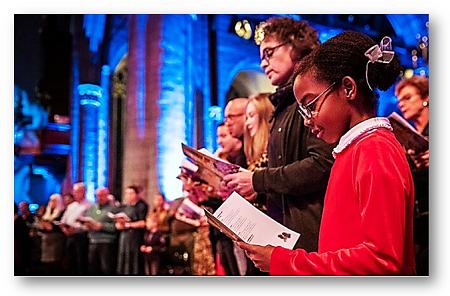Renew or Retain? The Place of the HC in School, Church and Catechesis
Renew or Retain? The Place of the HC in School, Church and Catechesis

As we commemorate the 450th anniversary of the Heidelberg Catechism, there is value in considering its place in schools and churches in the year 2013. The question should be raised: Should the HC retain the place it has always had, or has the time come for a new Catechism? Can the HC, dating from 1563, still be used without change in church services, catechesis and the school classroom? Should we perhaps make an addition to the original document, or even – as Tim Keller has recently done with his New City Catechism1 – write a completely new one?
The Present Situation⤒🔗
Before we are able to ask such questions, we need to know what the current situation is. Is the HC, in its original version of 1563 (aside from modernised spelling and sentence structure), still being used in 2013? This investigation is limited to the Netherlands, and addresses the present situation, first of all in the (elementary) schools, and further in the catechesis and the church services.
In the Schools←↰⤒🔗
The system of education in the Netherlands is unique: the government funds public and Christian schools equally. There is diversity among Christian schools: some are broadly Protestant, others are specifically Reformed.2 The so-called ‘Protestant’ schools vary widely: some regard all religions as being of equal value, while others wish to be guided by the Bible alone. The latter group often feels a strong affinity with Reformed schools.
At present, there are approximately 300 Reformed and conservative Protestant schools in the Netherlands that still use the HC. In many of these schools, a period of instruction will typically take place on Monday mornings for students in the higher elementary grades (aged 11 and 12). 20 or so questions and answers are dealt with in the course of a year, most of which are memorized. In most cases the text of the Catechism is little changed from the original version of 1563; only archaic terms, spelling and sentence structure have been updated. This Catechism is explained by the teacher, and applications are made to link this material to the time and context in which these children live. A visitor to the school, on entering a classroom, might hear the whole class recite the week’s question and answer together.
In the elementary schools, this practice is not likely to change in the near future. And most of these schools do not appear to be asking for a revision of the HC either. This is probably due to the fact that for most of these schools, the HC is one of the confessional documents that form the basis of the school.3
Reformed secondary schools generally do not set aside time for explicit instruction in the Catechism. However, in the religious studies courses, frequent reference is made to the Reformed Confessions in general, and students are expected to draw on them as they study a range of topics.
Most Protestant secondary schools, on the other hand, devote little or no attention to the HC at all.
In the Churches←↰⤒🔗
In many Reformed churches in the Netherlands, the Heidelberg Catechism is still dealt with every Sunday, usually in the afternoon service. Again, the version in use is the original from 1563. The practice will vary: some congregations have a set schedule, beginning with Lord’s Day 1 in January and completing the cycle within the year, while other congregations may take up to three years to complete the cycle.

Regrettably, the catechism sermon is often limited to an explanation of the text, and a spiritual application; its relevance to the questions that face believers in their day-to-day lives does not always receive the attention it deserves.
In most congregations of the Dutch Protestant Church (PKN), however, the Sunday-afternoon service – devoted especially to instruction – is losing its place, and there is no requirement from the side of the synod that attention is to be given to the HC. Where it does happen, it is usually packaged within a topic or theme considered relevant to the present-day congregation.
This change in approach reflects a changing view of the HC. Is instruction in the Catechism an end in itself, or is it a resource to be used when the congregation reflects on a certain topics? Reformed churches still regard the HC as a confession of faith, and maintain its position fully in original form. And in these churches, there is almost no desire for revision of or addition to the HC. Instead, there is a strong sense of thankfulness that we still have the HC, and any suggestions for change generally meet with resistance and suspicion.
In Catechesis←↰⤒🔗
The use of the HC in catechesis is by no means a given. The great Synod of Dort (1618-1619) stipulated that the HC was to be used in the churches and in the schools. M Golverdingen has shown that the HC was rarely used in the 17th and 18th centuries as a resource for catechesis.4 Instead, the much shorter Voorbeeld der Goddelijke Waarheden by Abraham Hellenbroek was far more widely used.5 In our time, there is a renewed focus on catechesis in most churches. The approach, however, is much different from what was used previously. Again, this has to do with the view of the HC.
In the Dutch Protestant Church the HC is seen primarily as a resource for instruction in the faith, and knowledge of the Catechism is not seen as an end in itself. The first years of catechesis are often devoted to stories from the Old and New Testament, since children who have not attended Reformed schools are often greatly lacking in knowledge of the Bible. In addition, various Biblical themes are discussed, and here the HC does fill an important role. However, the HC as such is often not covered, and students are rarely expected to memorize any of it. Catechesis leading to profession of faith may require students to explore important themes and work them out for themselves. By contrast, within Reformed churches, where the HC in its full and original form is maintained as a confessional document, knowledge of the confession itself is regarded as a goal in its own right, to ensure grounding in the sound doctrine of the faith.
It is remarkable, though, that the HC itself is often not covered in the catechesis. The use of Hellenbroek’s Voorbeelden is still very common. In a few congregations, the HC itself is used, supplemented by contemporary resources that aim to bridge the gap with the present-day world of the students. In addition, for pre-confession classes, some churches use the Kort Begrip of H Faukelius, a brief summary of the Catechism, consisting 74 questions and answers, intended to be memorized.
To conclude: In many Reformed churches, the Heidelberg Catechism of 1563 still has a very important place. The degree of desire for revision depends very much on the position given to the Catechism. In those churches where the Catechism is regarded as a foundational confession, there appears to be little prospect of adapting or renewing the HC
The HC: do we Renew or Retain it?←⤒🔗
We take a step further: how can the HC, dating from 1563, retain its place, now and into the future? For Reformed churches, that continue to regard the HC as a confessional document, one to which they are spiritually bound, the problems will be different than for the PKN, for whom the Catechism is chiefly a resource for instruction in the faith. We will begin by looking at the PKN.

Renewing the HC←↰⤒🔗
Churches within the PKN frequently ask for adaptations and sometimes even wholesale additions to the Catechism, in keeping with the circumstances of our own time. The expressed need for these changes arises from a changed view on teaching and learning, consistent with current practice.
Teaching and Learning←↰⤒🔗
Contemporary insights into teaching and learning have shown that new knowledge must build on existing knowledge. Where it does not, actual learning will be minimal. In their Altijd Leerling, W Verboom et al. have considered the pedagogy and didactics of catechesis.6 There is a shift in focus from content to the learner. The learner must actively participate in the learning process, and learning takes place through interaction. This might happen through questions asked by the teacher, to which the learner responds; however, an approach where the learner summarizes the key thoughts of an article or idea in their own words is often just as effective. This has important implications for catechesis, but that need not exclude the learning of the text of the Catechism itself.
In recent decades, there has been another shift. Now, there is more attention for the world in which the learners live, for their own context. The context of the learner has become increasingly important for the approach to content. Obviously, the step from a 16th century booklet about faith to the day-to-day world of our students is huge. And it goes without saying that this has implication for catechesis. Were an instructor to list the themes or topics his students would choose to discuss, it is not very likely that matters such as the Trinity, the doctrine of justification, or the bodily presence of Christ in the Sacraments would come up. Contemporary methods of catechesis often choose to begin with the world and life context of the learners. For example, A. de Kock takes what he calls an ‘adductive approach’, where the teacher and the learner interact in a kind of master/apprentice relationship. However, a catechesis that takes its starting point in the experience and context of the learner will not address important theological themes, like those mentioned above.
It is by no means a given that new insights into didactics can be prescribed as normative for the order of learning. It is not true that one must always first consider the life context of the learner before deciding on the content to be learned. It is quite possible to begin with what must be learned. Obviously, connections must be made with the life experience of the learners – otherwise the content will be left hanging. The church has a large stake in transmitting the core truths of the Christian faith to a new generation. Sound doctrine and knowledge of the faith must be passed on. It should be clear, then, that catechesis must give ample opportunity for the voice of God to be heard, and that is equally normative for all generations.
Writing a New Catechism?←↰⤒🔗
Within the more conservative congregations of the PKN there is still a high level of appreciation for the HC as a spiritual monument, but in practical terms, it is no longer useable in the catechesis. Many young people in these churches are in search of the truth, and are looking for existential answers. Often, these are questions that are not directly addressed in the HC: the existence of God, the origin of evil and suffering in this world, or how to display a truly Christian attitude in an increasingly secular world. If our instruction in the faith is defined by these questions, so goes the argument, then the HC will have little to offer, and it is time to write a new Catechism.7
Actually, I question whether any new catechism, such as Tim Keller’s Catechism referred to above, would even be accepted as authoritative. I wonder to what extent young people still see the need for Biblically-based truths that are normative for their spiritual lives.
Retaining the HC←⤒🔗
Reformed churches choose to maintain the HC in its original and unabridged form, now, and into the future. This position, too, needs to be examined. Should the HC be so maintained, and if so, what problems does that raise for learners and teachers? Should the Catechism need some additions or elaborations, perhaps?

The Catechism, a Product of its Time←↰⤒🔗
The HC dates from 1563, and by now, in 2013, it has receded from us by 450 years. It is obviously a product of its own time, and to some extent bound by its time. We note a few examples:
- The theological points of departure in the HC are very much determined by the issues of the 16th century. Then, there needed to be great attention for the struggles with the church of Rome on the one hand and the Anabaptists on the other. Some of the questions of the HC are not so relevant today, such as Q&A 101, about the swearing of oaths.
- We live in the time after the Enlightenment, and that has implications for the way in which we see the content of the HC.8 Questions such as the authority of Scripture, the historic truth of Christ’s resurrection, and the relationship between a loving God and suffering in the world, are very prominent for us. Such questions were not even raised in the HC.
Reformed churches are confronted by theologians such as Rick Warren and John Piper, who predict that traditional Protestantism has had its day, and that the future belongs to the evangelicals. In their catechesis, Protestant and Reformed churches will have to give account of the evangelical movement. They must also be alert to the dangers of Arminianism and the charismatic movement. One wonders how useful the HC is in dealing with these matters.
New theological themes have arisen, and these too ask our attention. The HC is a textbook of Reformed doctrine, and it addresses issues that were dominant in its own time. If the churches still want to give the HC a place in its catechesis, they will also have to pay attention to themes and topics that are prominent today: Mission and Evangelism, Apologetics, Israel – to mention just a few.
Translating for Today←↰⤒🔗
Reformed churches that wish to hold fully to the HC must take these changes into account in their instruction. This can be done in two ways:
- They can continue as always with the HC, and add to their catechesis material that deals with contemporary issues;
- They can adapt the HC itself, by means of an addition to the document, dealing with these newer themes. Such additions need not be given the status of a confession: rather they could be more of an actualization, in our own time and context, of the Reformed confession in matters of theology and ethics.
Today’s Context←↰⤒🔗
For our young people today, the content of the HC seems to have little relevance to their own context and everyday experience. But we may ask: does it have to? The teacher could simply accept the context and experience of his students as a given, and hold out to them a new and different view on life, one which can only enrich them.
We are told that new knowledge needs to connect with prior knowledge for it to take hold. In itself, that is true, but at the same time, we must realise that knowledge about God always comes to us from the other side, and will therefore come to us as new knowledge. The substance of instruction in the faith need not – often it cannot! – connect to one’s own context and experience; the method of instruction, however, must make such connections. Links with prior knowledge and experience are essential. For example, the Biblical notion of ‘covenant’ can best be conveyed using the known concepts of ‘agreement’ and ‘relationship’. It is not hard for children to understand that relationships will suffer if agreements are not kept. There are, however, core understandings of the faith – such as the doctrine of the Trinity – that cannot be drawn from their own experience. When that happens, it is the instructor’s task to show the relevance of this truth as clearly as possible.
The Form of Instruction←↰⤒🔗
Within catechesis, the HC can retain its place, but there is room for a different approach in doing so. The Catechism need not necessarily be covered in a linear sequence of 52 Lord’s Days. One might consider subdividing the content into four themes per year, in such a manner that every year the central themes of faith, obedience and prayer receive due attention.

The language of the Catechism, also, is in need of revision. A re-translation for young people is desirable: it could make the content much more understandable. There is a real need to explain the Catechism’s special terminology, and to rewrite its long and complex sentences.
A different question is whether memorization in its question-and-answer format is still suitable for our time. As such, the form still has value. And the suggestion that there is no value to memorizing the truths of the faith is simply wrong. Knowledge that has been committed to memory fills and shapes the spirit of the person who learned it. Facts that have been learned become the lasting possession of the learner. They become the learner’s spiritual baggage, as it were. That is why the memorisation of the HC is as relevant now as it ever was. Of course, these learned understandings must be applied by the Holy Spirit, so that by the grace of God the learner does believe and repent.
Summary and Conclusion←⤒🔗
When, in conclusion, we again ask: ‘should the HC be retained or renewed?’ it should be clear that both options raise their own questions and present their own problems. Personally, I lean towards the position of Reformed churches that wish to retain the HC of 1563 in its original form. However, this is not to say that newer catechisms cannot be any good, or that the HC is the only good catechism.
In my view, the spiritual level at which the HC expresses the truths of the Reformed faith is without parallel. I would have difficulty finding myself in attempts to modernize or add to the HC, the better to relate it to our time.
At the same time, it is important to develop a contemporary approach that properly addresses contemporary issues, alongside the questions and answers already found in the Catechism. For that, we will need instructors who are well trained, both theologically and didactically, and who are capable of giving sound spiritual guidance to young people. In this way, the gold that is to be found in the Heidelberg Catechism of 1563 can be passed on to coming generations.

Add new comment